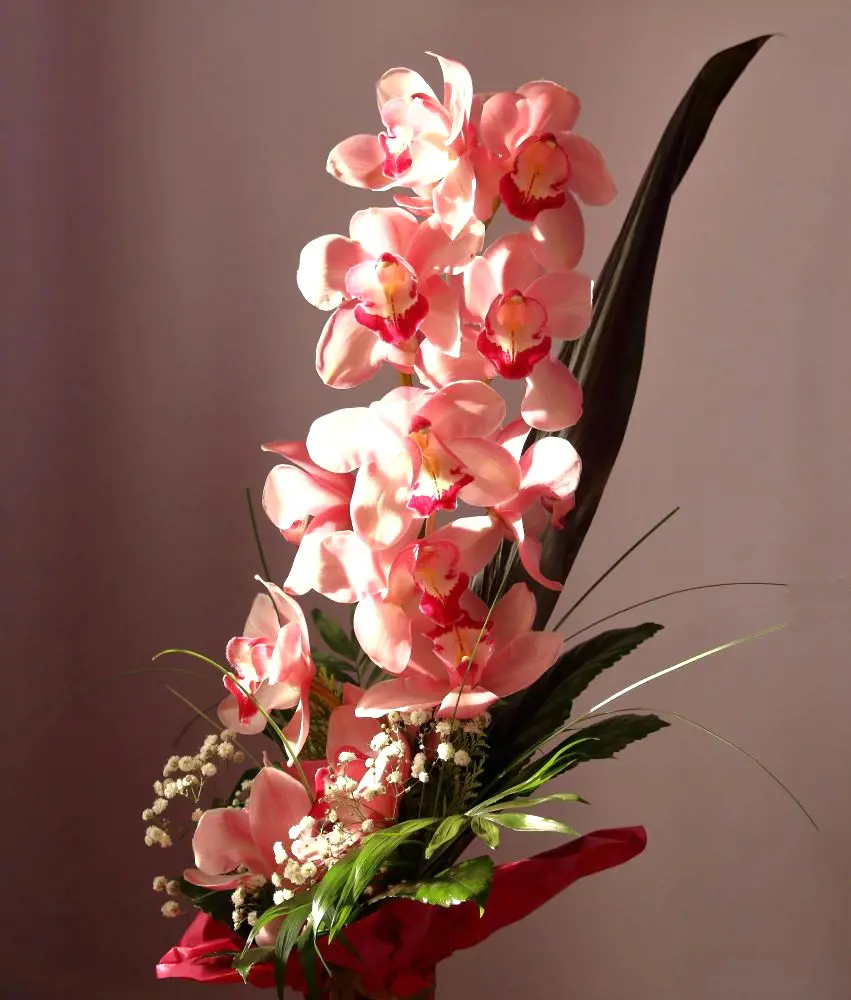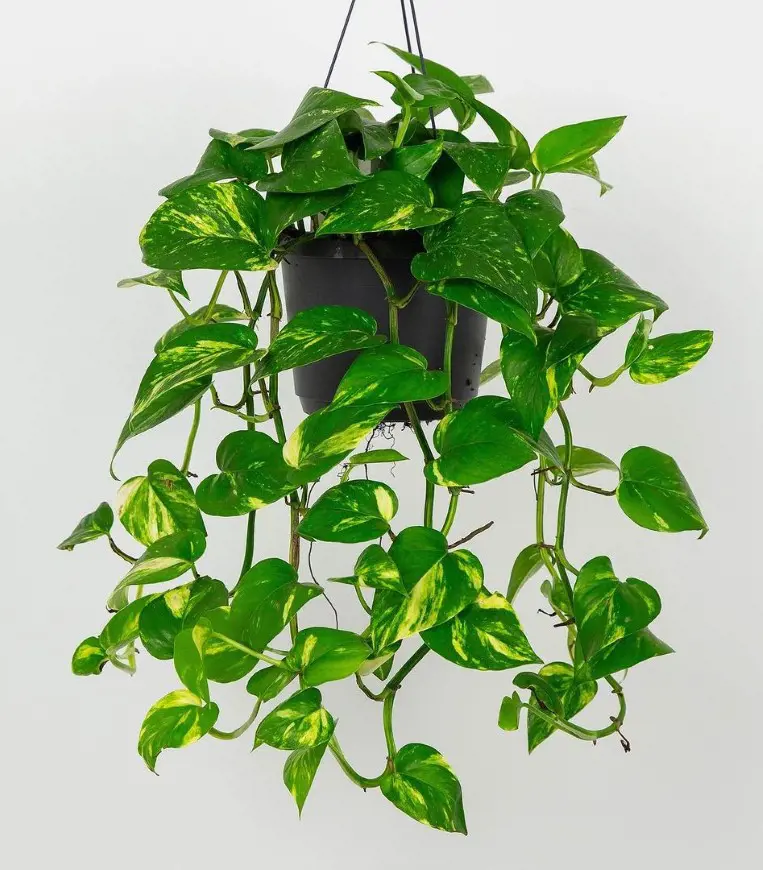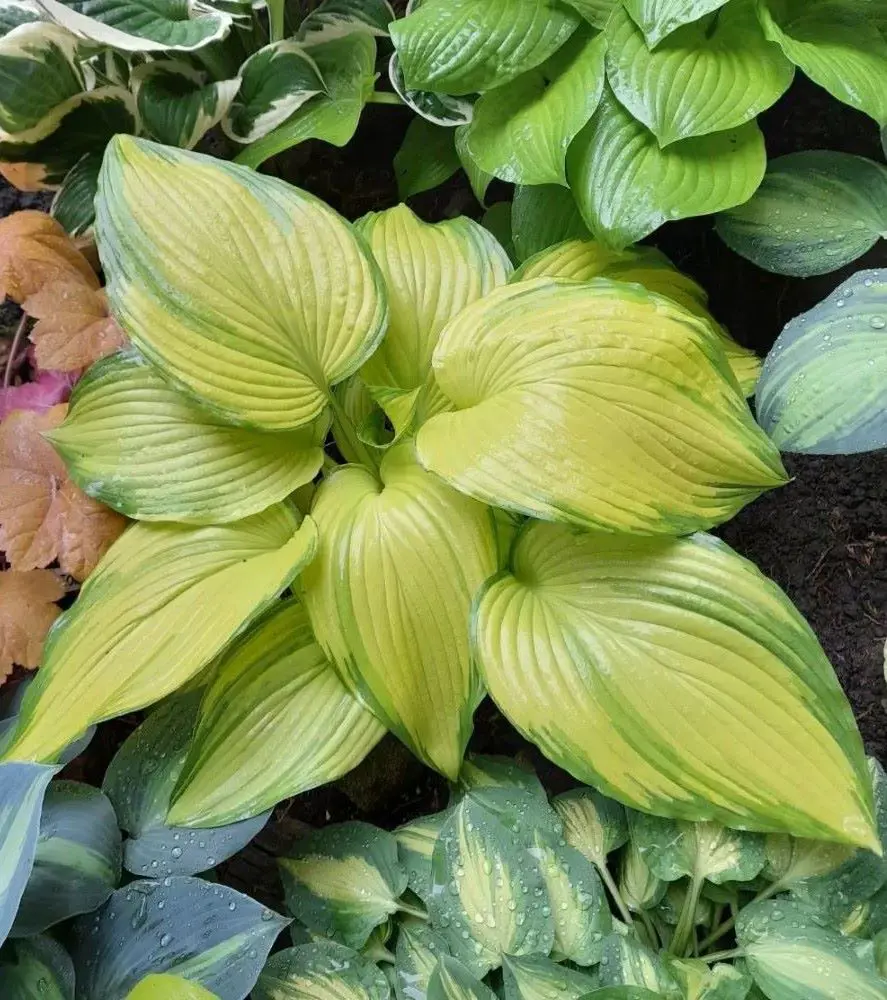Hibiscus Plant Care And Growing Guide
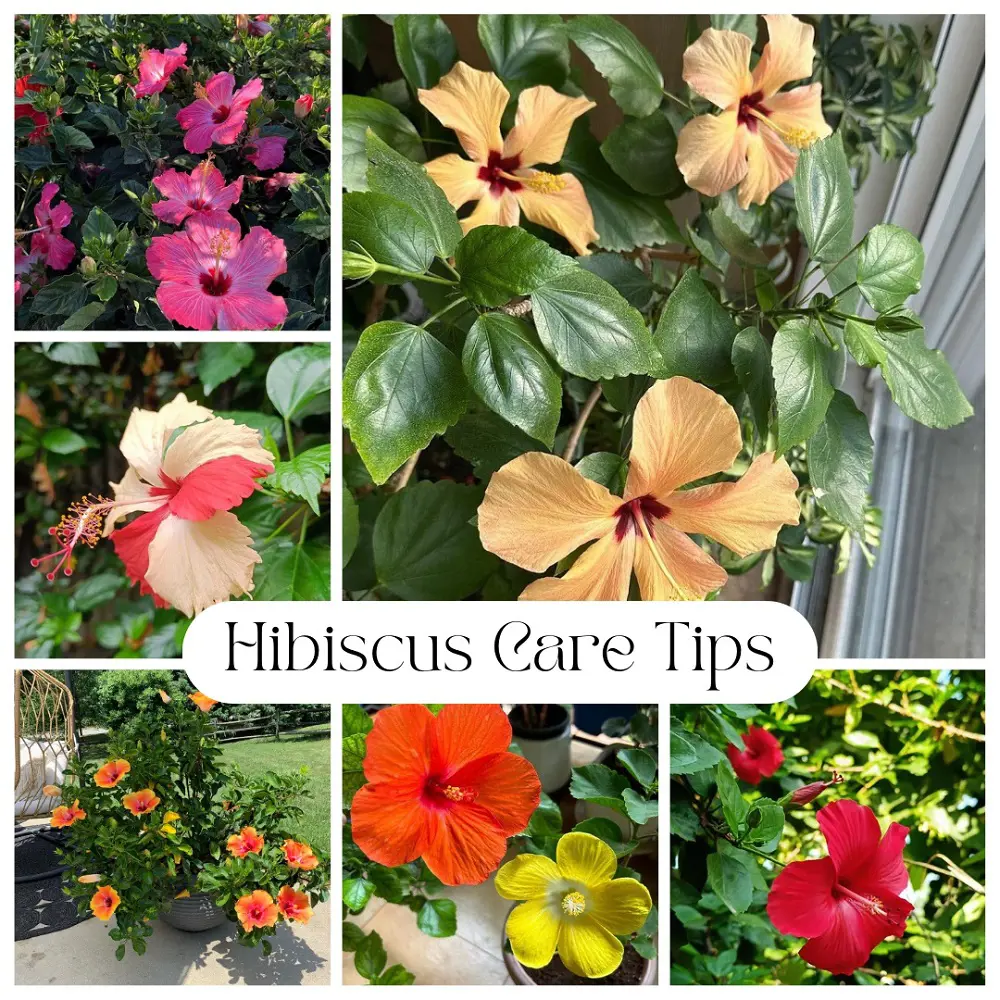
This post may contain affiliate links. If you make a purchase through links on our site, we may earn a commission.
Hibiscus plants are known for their stunning, large flowers that come in a variety of colors. Though each flower lasts only a day, hibiscus plants boast a long blooming season.
They are relatively easy to care for, but there are a few key things to keep in mind to ensure they thrive.
In this article, we will provide you with hibiscus care tips on growing, fertilizing, and watering your plant so that you can enjoy its beautiful blooms all season long.
Choosing the Right Hibiscus for You

There are many different types of hibiscus plants, so it is important to choose one that is right for your climate and growing conditions. Some popular varieties include:
- Tropical hibiscus: These hibiscus plants are typically grown indoors as houseplants. They need warm temperatures, bright light, and consistent moisture.
- Hardy hibiscus: These hibiscus plants can be grown outdoors in USDA zones 5-9. They are more cold-tolerant than tropical hibiscus and can tolerate some neglect.
- Rose of Sharon: This type of hibiscus is a large shrub that can grow up to 12 feet tall. It is known for its showy pink or purple flowers and is relatively low-maintenance.
Once you have chosen a hibiscus plant, it is time to learn about the care it needs.
Sunlight Requirements

Hibiscus plants thrive in bright conditions, enjoying full sun in northern areas but preferring filtered sunlight in the intense, dry heat of the south. If your plant isn't blooming much, consider relocating it to a sunnier spot. Indoor tropical hibiscus should be placed near a sunny window, but avoid strong, direct sunlight.
When moving plants outdoors in warmer weather, gradually acclimate them to the brighter conditions. This ensures that your hibiscus receives the right amount of light for optimal growth and blooming. Adjust their placement based on sunlight availability to keep your hibiscus happy and flourishing.
Soil Selection

Hibiscus plants thrive in well-drained, fertile, and moist loamy soil. The resilient varieties are native to wetlands, making them suitable for areas too damp for other plants. While most hibiscus types prefer slightly acidic soil, the rose of Sharon variety can tolerate alkaline conditions.
It's worth noting that the color of hibiscus flowers may be influenced by the acidity level of the soil. To ensure your hibiscus plants flourish, provide them with soil that drains well, is rich in nutrients, and maintains the right moisture balance, taking into consideration the specific preferences of the hibiscus variety you're growing.
Planting and Spacing
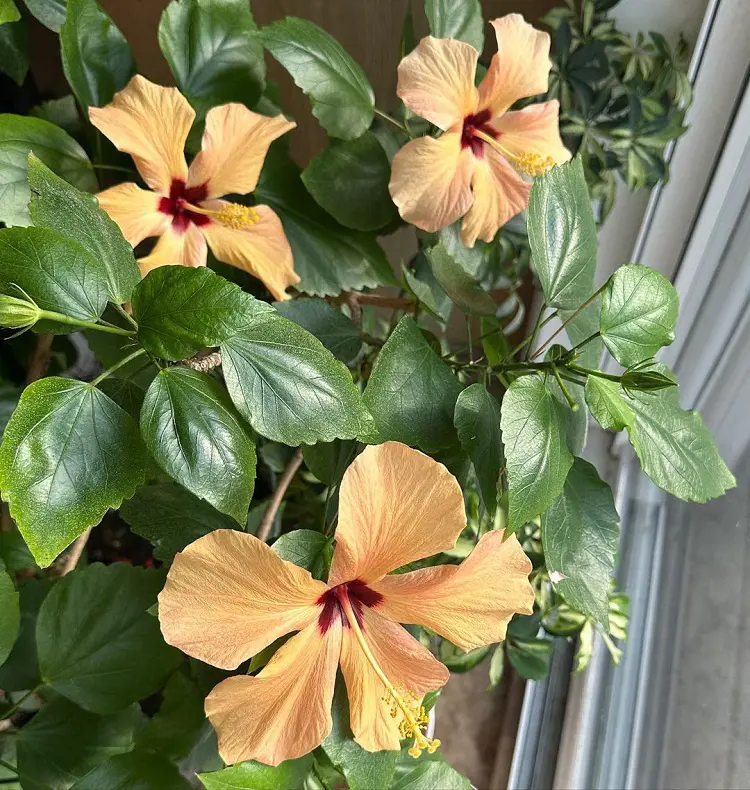
When planting hibiscus, dig a hole that's twice as big as the root ball, and position the plant at the same depth it was in the pot. Ensure the spacing between multiple hibiscus plants aligns with their eventual size, typically around 3-6 feet apart.
This allows each plant enough room to grow and spread out comfortably. By giving them the right amount of space, you're creating an environment where each hibiscus can thrive without competing for resources.
Proper planting and spacing contribute to the overall health and beauty of your hibiscus garden, promoting optimal growth and blooming.
Type of Fertilizer For Hibiscus

Select a well-balanced, slow-release fertilizer for your hibiscus, ensuring it has equal amounts of nitrogen, phosphorus, and potassium. Look for a fertilizer that also includes essential micronutrients such as iron, magnesium, and manganese.
These micronutrients are crucial for the overall well-being of your hibiscus plants, promoting their health and robust growth. By providing the right blend of nutrients, you're offering your hibiscus the necessary elements for vibrant blooms and strong, lush foliage.
Feeding Schedule and Application Method

In the active growing season, which spans from spring to early fall, give your hibiscus a nutrient boost every 4-6 weeks. When late fall and winter arrive, and your plant is in a resting phase, cut back or stop fertilizing.
When applying fertilizer, distribute it evenly around the plant's base, making sure not to let it touch the stem directly. Afterward, water the hibiscus thoroughly. This helps the nutrients reach the roots, ensuring your plant gets the nourishment it needs for healthy development.
By following this feeding schedule and proper application method, you're supporting your hibiscus throughout its growth cycles for optimal well-being.
Watering Techniques and Frequency

When watering your hibiscus, target the soil directly to avoid overhead watering, especially in the evening, as this can lead to fungal problems. Ensure proper drainage to prevent water from accumulating. Hibiscus plants like their soil consistently moist, but be cautious of overwatering, which can cause root rot.
Water deeply when the top inch of soil is dry, usually 1-2 times per week, adjusting based on the surroundings. By following these watering practices, you maintain an ideal moisture balance for your hibiscus, promoting healthy growth without the risk of water-related issues.
Mulching Benefits

Spread a layer of organic mulch at the hibiscus base to keep the soil moist, curb weed growth, and regulate temperature. This mulch also acts as a protective shield in colder months. If your area is dry, mulching helps retain moisture around the plant.
Additionally, if the soil lacks nutrients, adding organic matter through mulching is advantageous. By doing this, you create a supportive environment for your hibiscus, ensuring it has the right moisture levels and nutrients for healthy growth. Mulching is like a natural caretaker for your plant, helping it thrive in various weather conditions.
Temperature and Humidity

Rose of Sharon and hardy hibiscus are suited for cooler, temperate climates, thriving in temperatures ranging from 60 to 90 degrees Fahrenheit. They can withstand colder conditions, enduring temperatures as low as 20 degrees Fahrenheit.
In colder climates, especially when frost is a concern below 30 degrees Fahrenheit, it's advisable to bring container-grown plants indoors. These plants appreciate higher humidity levels, making bathrooms an ideal location.
Tropical hibiscus varieties, however, are more sensitive, and temperatures below 50 degrees Fahrenheit can be fatal. For their well-being, it's best to keep them indoors in humid environments where lower temperatures are likely.
Remove Deadheading

Regularly remove faded or spent flowers to promote continuous blooming in your plants. This process, known as deadheading, redirects the plant's energy towards producing new flowers instead of seed development. By consistently eliminating the old blooms, you encourage the hibiscus to keep producing fresh, vibrant flowers.
This simple gardening practice not only maintains the plant's visual appeal but also supports its overall vitality. So, take a few moments to remove those faded blossoms, and you'll likely enjoy a more prolonged and prolific display of beautiful hibiscus blooms in your garden.
Pruning for Shape

Shape and manage the size of your hibiscus by pruning in early spring. This involves trimming the plant to achieve the desired form and limiting its size. Additionally, carefully eliminate any dead or diseased wood to enhance the overall health of the hibiscus.
Early spring pruning promotes a well-groomed appearance and encourages robust growth throughout the growing season. By removing unhealthy wood, you prevent the spread of diseases and create a favorable environment for the development of new, vibrant growth.
Inspect Regularly

Regularly inspect your plants for common pests such as aphids, spider mites, or whiteflies. If you detect any pests, take prompt action by treating the affected plants with insecticidal soap or neem oil.
These natural remedies are effective in controlling and eliminating many common garden pests without harming the plants. Regular inspections and immediate intervention help prevent pest infestations from spreading and causing damage to your hibiscus.
By staying vigilant and addressing pest issues early on, you can maintain the health and beauty of your hibiscus plants throughout the growing season.
Disease Prevention

To prevent fungal diseases, prioritize good air circulation around your hibiscus plants. This can be achieved by ensuring that the plants are not crowded together and that there's ample space for air to flow between them.
Additionally, avoid overhead watering, especially in the evening, as this reduces the risk of leaf spot diseases. Watering directly at the base of the plant helps keep the foliage dry, creating an environment less favorable for fungal development.
By promoting proper air circulation and adopting smart watering practices, you significantly minimize the likelihood of fungal diseases affecting your hibiscus.
Hibiscus Care In Winter
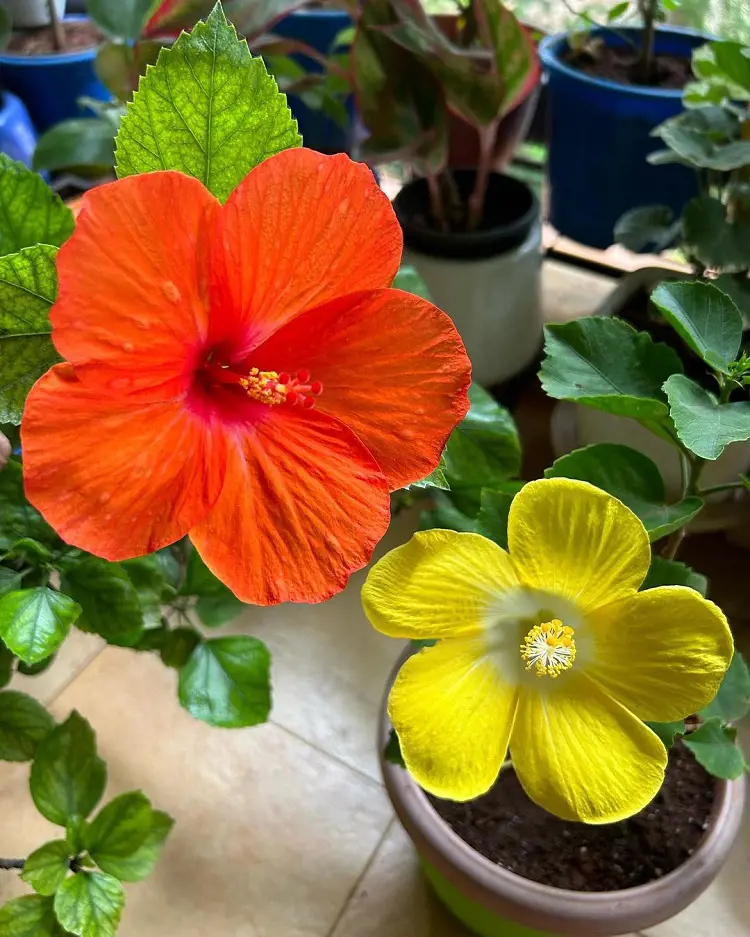
Take special care of your hibiscus during winter, especially in colder climates. For potted hibiscus, it's advisable to bring them indoors to shield them from the harsh winter conditions. For outdoor plants, apply a layer of mulch around the base.
These winter care steps help protect your hibiscus, ensuring their survival through the colder months. Whether sheltering potted plants indoors or mulching outdoor ones, these precautions contribute to the overall well-being of your hibiscus and set the stage for a healthy return when warmer weather arrives.
Potting and Repotting Hibiscus

For potted hibiscus, prioritize their health by considering repotting every few years, preferably in early spring. Opt for a shallow pot, as deep containers may divert the plant's energy towards root development rather than flower production.
Repotting helps refresh the soil, providing the hibiscus with the necessary nutrients for optimal growth and flowering. This practice ensures that the plant remains vibrant and productive in its container. By being mindful of the pot size and timing of repotting, you create an environment where your hibiscus can flourish and showcase its beautiful blooms.
When to Plant Hibiscus?

The best time to plant hibiscus depends on the climate and the specific type of hibiscus you have:
- Tropical Hibiscus (Indoors): If you are growing tropical hibiscus varieties indoors or in containers, you can plant them at any time of the year. They thrive in a controlled indoor environment.
- Hardy Hibiscus (Outdoors): For hardy hibiscus varieties, it's generally recommended to plant them in the spring after the last frost has passed. This allows them to establish roots before the heat of summer.
- Rose of Sharon (Outdoors): Rose of Sharon can be planted in the spring or early fall, avoiding extreme temperatures.
Regardless of the type, providing adequate sunlight, well-draining soil, and proper watering are crucial for the successful establishment of hibiscus plants.
Common Problems With Hibiscus

Hibiscus plants are generally hardy, but they can face some common issues. Here are a few problems you might encounter and how to address them:
Aphids, Whiteflies, or Spider Mites
- Issue: These are common pests that can affect hibiscus, causing yellowing of leaves and stunted growth.
- Solution: Use insecticidal soap or neem oil to control infestations. Regularly inspect your plants and treat them at the first sign of pests.
Yellowing Leaves
- Issue: Yellow leaves may be a sign of overwatering, underwatering, or nutrient deficiencies.
- Solution: Adjust your watering schedule, ensure proper drainage, and consider fertilizing with a balanced fertilizer or one designed for hibiscus.
Leaf Spot Diseases
- Issue: Fungal infections can lead to dark spots on leaves, affecting plant health.
- Solution: Improve air circulation by spacing plants adequately. Avoid overhead watering, and treat with fungicides if needed.
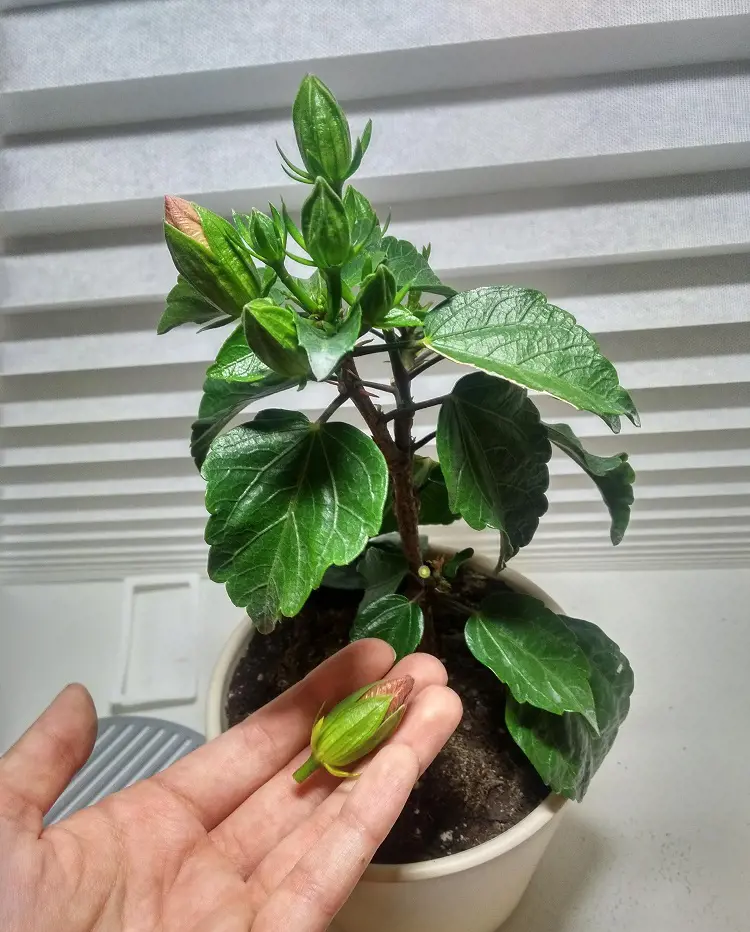
Bud Drop
- Issue: Hibiscus may drop buds if conditions like temperature fluctuations, overwatering, or underwatering occur.
- Solution: Maintain consistent watering, protect plants from temperature extremes, and ensure they receive adequate sunlight.
Yellowing of Older Leaves
- Issue: Natural aging can cause lower leaves to yellow and drop.
- Solution: Prune away old, yellowing leaves. This is often a normal part of the plant's growth cycle.
Winter Damage
- Issue: Cold temperatures can harm hibiscus, especially in non-hardy varieties.
- Solution: In colder climates, bring potted hibiscus indoors for the winter. Mulch outdoor plants to protect the roots from freezing temperatures.
Recent posts
Plant Care
Plant Care
How To Take Care Of An Orchid Plant? 11 Tips And Tricks
If you love gorgeous orchids but are worried they're too high-maintenance, don't worry. This guide is like a cheat sheet for orchid newbies. Forget fancy words and confusing schedules — we're talking about how to take care of an orchid pla...
Plant Care
How To Grow and Care For Peace Lily Plant
The Peace Lily is an indoor plant that is most valued for its beautiful and shiny green leaves as well as the white blooms. Hard and tolerant, it’s naturally a low-maintenance addition to your plant collection. If you are confused, let us tell ...
Plant Care
Pothos Plant Care And Growing Guide
Adding a Pothos plant (Devil’s Ivy) to your home benefits the environment and aesthetic of your personal space. It's easy to maintain and is loved for it's ability to enhance indoor air quality by removing toxins like formaldehyde, benzene, and...
Plant Care
Snake Plant Care and Growing Guide
Snake plants require low maintenance, and low light and are almost impossible to kill, making them a perfect plant for beginners and seasoned gardeners. In this guide, we will explore essential care tips and optimal growing conditions for snake plant...
Plant Care
How To Plant, Grow and Care Majesty Palm
The majestic palm, scientifically known as Ravenea rivularis, makes for a stunning indoor tree with its lush and grand fronds. Originating from Madagascar's river banks, this resilient houseplant is cherished not only for its beauty but also for its ...
Plant Care
How To Grow And Care For A Hosta Plant
Hosta plants are widespread perennials, often grown for their beautiful and diverse foliage. They are extremely easy to care for and can thrive in various conditions, particularly shade or semi-shade. These hardy plants can last for many years and re...
